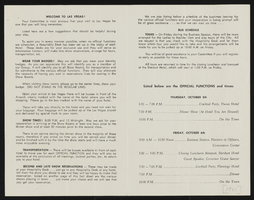Search the Special Collections and Archives Portal
Search Results
Kathy Eastland Papers
Identifier
Abstract
The Kathy Eastland Papers (1972-2003) document Kathy Eastland's experiences working in Nevada brothels. Materials include ephemera and memorabilia collected by Eastland from various brothels in Nevada such as the Mustang Ranch, the Moonlite BunnyRanch, and Old Bridge Ranch. Included in the collection are brothel menus and photographs of Eastland and other sex workers socializing in the brothels. The collection also contains notes, research, and drafts of Eastland's manuscript
Archival Collection

Topographic map of groundwater in the southeast quadrangle of Las Vegas, Nevada, 1980
Date
Description
Text
Alterwitz-Stralser, Deanne
Deanne Alterwitz-Stralser (née Friedman) was born January 1, 1931 in Hammond, Indiana, the daughter of an insurance salesman and a stay-at-home mom. Alterwitz-Stralser spent her childhood in Calumet City, just across the state line in Illinois, and was raised with a strong Jewish identity. At the age of sixteen, she met her husband, Oscar Alterwitz, at an Alpha Zadik Alpha (AZA) dance in Gary, Indiana, and the two were married in 1950.
Person






